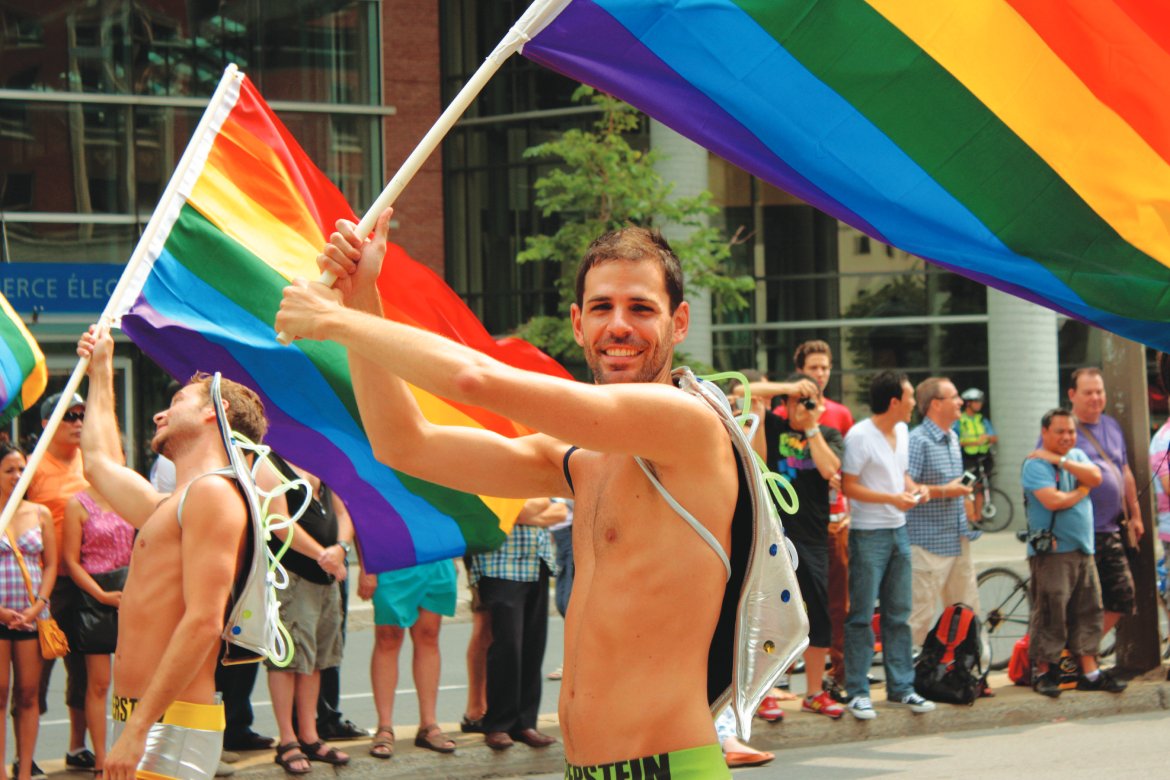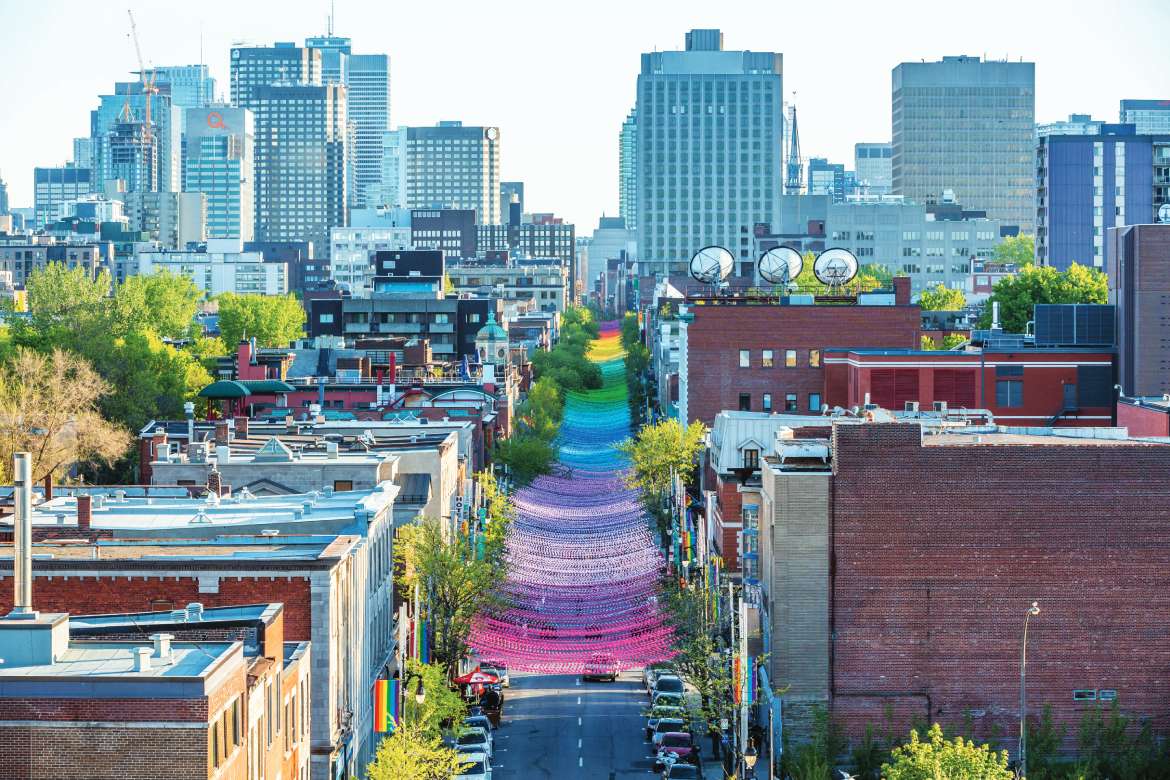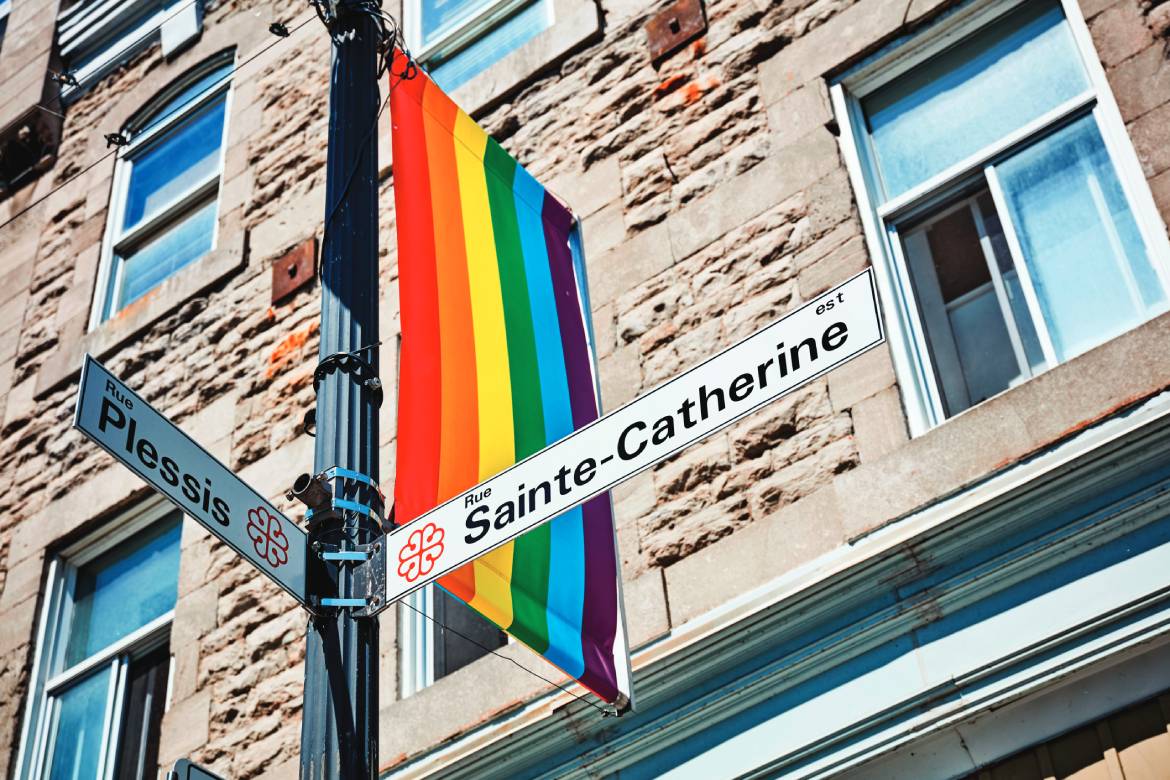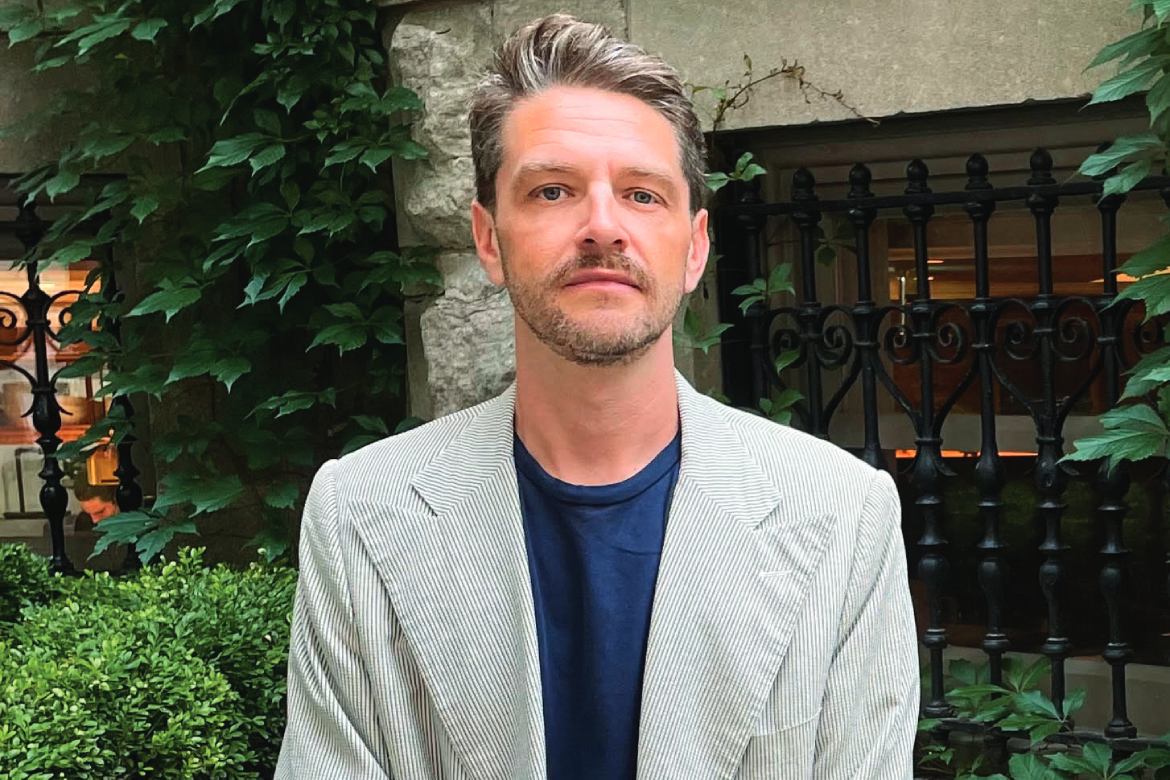The best cities have layers. Thom Seivewright found new, surprising ones in his hometown of Montreal, and he’s sharing them through his deep-dive Queerstory tour.
After years as a Clefs d’Or-member hotel concierge, Seivewright, 44, got out from behind the desk to begin working as a local tour guide. He completed guiding-school coursework, learning all about Montreal’s famous sights and attractions, such as its French-colonial origins, religious history, and iconic architecture, but he soon realized that success as a city guide would come from differentiating himself. He wanted to share his Montreal.
“I thought, how can I distinguish myself?,” says Seivewright. “I’m just a big old queer, so why don’t I think about doing things that are more aligned on that. Then it just made sense that [LGBTQ+ life] would be where I concentrate some of my efforts.”
In the traditional guiding-school syllabus, stories of LGBTQ+ Montreal were hard to find. Seivewright wanted to build his own meaningful queer-history tour, but during Quebec’s pre-pandemic tourism surge, he found himself always too busy working. Then came COVID19, and his career momentum working seven days a week quickly plummeted to zero. With too much free time, Seivewright soon found a silver lining, realizing that the downtime was his chance to conduct research and create a queer tour unlike any other in Montreal. He says, “I felt like, why does this not exist already, and who the hell is going to do it if not me?”
What he discovered was a long, complex history of the local LGBTQ+ community, stretching back beyond Canada’s modern history, and continuing through 20th-century police raids, protests, and fabulous parties. For a lifelong, bilingual Montrealer like Seivewright, the layers under his own community’s history were startling and inspiring. He couldn’t wait to share them through his unique Tours Montreal Queerstory tour (toursmontreal.com).
Thom, you describe your Queerstory walking tour as a way to “discover the spots where every group in the L-G-B-T-Q-2+ communities had their struggles and their victories…where men were first legally allowed to dance with other men, the boycott that led lesbians to organize their way to emancipation, why Montréal nightlife was the sh*t, and the dreadful consequences of what they once called ‘the worst of crimes’.” How did it all come about?
I reached out to a few people who I knew would be good contacts. They put me in touch with a few more people, who put me in touch with a few more people. Then all of a sudden I had this really great list of people to interview and get firsthand stories. I interviewed about a dozen or so people, and you could add twice that many people as more casual resources who shared additional details.

Celebrating Pride in Montreal (Photo by Katstudio)
Were any of the people you spoke to reluctant to share their stories?
Nobody was reluctant. Every single person was so happy to participate and to share stories. I think it came from realizing it’s now or never. If these stories are not going to be told now, we might wait too long and not be able to tell them. Some of them thought, how come no one’s ever done a walking tour for queer spaces like this before? I think a lot of them felt compelled to participate just to be part of something really important.
Your Queerstory tour is centered in the West End neighborhood, which is more than a mile from today’s Gay Village on the other side of Downtown. Did you always know that the original gay neighborhood was West End?
By the time I came of age, the Village had already moved. The transition was very gradual, starting in the late 70s, and by about 1990 it had really shifted to where it is today [around East St. Catherine Street]. So that’s the Village I grew up knowing. I didn’t know until I was probably in my 30s that there was another Village somewhere else before then. I would hear little tidbits of stories over the years. Walking around [West End], every once in a while I would hear how this bar used to be around here, or remember that L’Androgyne bookstore was around here.


Village Canopy (Photo Credit © Eva Blue)
Your Queerstory tour is very sensitive in sharing difficult city history, including a few heartbreaking stories of violence against LGBTQ+ people, such as the murder of Joe Rose. Why do you feel it’s so important to include stories like his?
The story of Joe Rose is a major inspiration for this tour. That might even be the thing that started at all. It’s the story about a guy who got murdered on the bus, stabbed to death, because he was wearing a T-shirt saying that he had AIDS, and he had flashy pink hair. When I heard about it, I thought, how did I never hear that story before? I felt guilt and shame that I didn’t know this story when it was so close to home. So I thought, well I have to do something so that other people will hear the story, so that it will be better known. And that’s the greatest gift that I can give back.
Your Queerstory tour approach is very cool. You make one stop for each element of the “L-G-B-T-Q-I-A-2” acronym, including Intersex, Asexual, and Two Spirit. Some of those stops hit on hard realities, others are fun and fabulous, like the Chez Paree venue’s past as Limelight, which was a wild “sister club” to New York City’s famed Studio 54. Was it hard to strike the right balance?
One of the guiding-school teachers said, “Keep in mind, unless they’re private groups or niche clients, your clients are people who are on vacation. They’re on holiday. They’re in a good mood and they want to remain in a good mood. They don’t want to walk away having heard only sad stories.” And that really stuck in my head. So when I was curating this tour I started with about 40 to 50 different location possibilities, with 40 to 50 different stories. I whittled it down to about a dozen different stops. So when I chose which ones I was going to keep, I made sure that half of them at least were for happy stories. Then when I put the tour together and created the timeline, and which stop was going to be in which order, I thought it would be fun if they were never two sad stories back to back.
Did the harder stories cast a shadow on your love for your city?
No, but it really opened my eyes. I think that, as I say on the tour, I am the fruit of the labor of all the people who came before me. I grew up in a time in Montreal when all of the [harder] stories were kind of done. I’m not going to say that they’re completely over, there are still always going to be issues. But by the time I came of age in the mid-90s, the police raids were done. Arresting people for being in a “common bawdy-house” (a Canadian term for a place used for “indecent acts”), that was done. By the time I grew up and started going out and enjoying queer culture, these terrible things from the not-too-distant past, none of that was there anymore. And it didn’t cast a shadow on my opinion of the city, because I already knew the city was awesome.
You share powerful historic photos related to each stop, how did you find them?
A lot of them are available to the public; you can find them at the Quebec Gay Archives (agq.qc.ca). Some of the other ones I found on the Internet and wrote to the photographers for permission to use them on my walking tour. One of the photographers, Linda Dawn Hammond, she took pictures at one of the police raids and they were published in the papers. After that, suddenly the media started getting the story [about anti-LGBTQ+ police raids] right for the first time in decades.
How do you think today’s Village along East St. Catherine Street has evolved?
That’s a really loaded question for me. It’s a hot topic. Montreal’s Gay Village, for lack of a better explanation, it’s undergoing an identity crisis right now. There’s a different vibe. Gay bars are in decline, and that’s not just a Montreal thing that’s a worldwide thing.


The Gay Village in Montreal (Photo by Cagkan Sayin)
A lot of younger people are benefiting from this “mainstreamization”—I don’t know what else to call it—of queer culture. So they don’t feel necessarily connected to queer-only safe spaces, because they can go be queer in a straight bar and it’s completely fine. And that is a beautiful, wonderful thing, but what is it doing to our queer spaces and our gay villages? It’s putting them in precarious situations.
Add to that one more thing that makes the Montreal Village even more fragile right now: There used to be this amazing work of art that was a canopy above St. Catherine Street in the Gay Village: 180,000 resin balls in all colors of the rainbow. Remember that? It was there for about 10 years. It was awesome and it created such a cool vibe. People would come into the Village just for that. And then [the city] took it down, because the artist had conceived it as a temporary project, and he never had the intention of keeping it there forever.
So when the time came to take it down in 2019, the city was in such an uproar. Something as simple as that, it brought attention, it brought people, and now it’s not like it used to be. Now they’ve put up these disco balls on the lamp posts, but you don’t really notice them right away. So they didn’t really do a good job replacing that iconic canopy. It sounds silly, but ever since it’s been gone, I feel like the Village is going through an identity crisis.
What’s your best advice for Montreal visitors?
I think that Montreal has a lot of sites and attractions, it has a great culinary scene, and it also has great cultural, museum, and arts scenes. All of that is amazing! But the true magic of Montreal is that it’s a city that needs to be experienced. What do I mean by that?
This might sound cliché, but you really need to live like a local in this town. And the best thing you can do, even more than seeing the sights and attractions, is just hang out in the neighborhoods and talk to people who live there. People are so easy to approach. And everyone in Montreal is obsessed with this town. I think that everyone who lives here knows that they’re in a very special place, and they’re very happy to share that passion. And if you’re feeling too shy to start conversations with strangers, just book a tour, and your guide will give you that first-hand advice about where to go, and what to do. Because that’s what your guide is—your local best friend.


